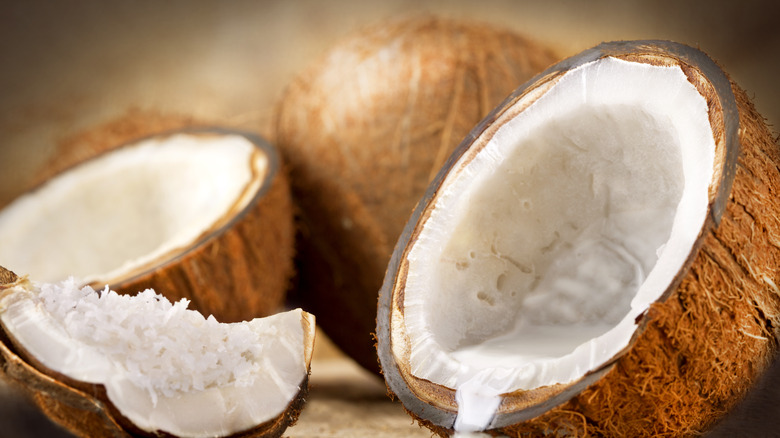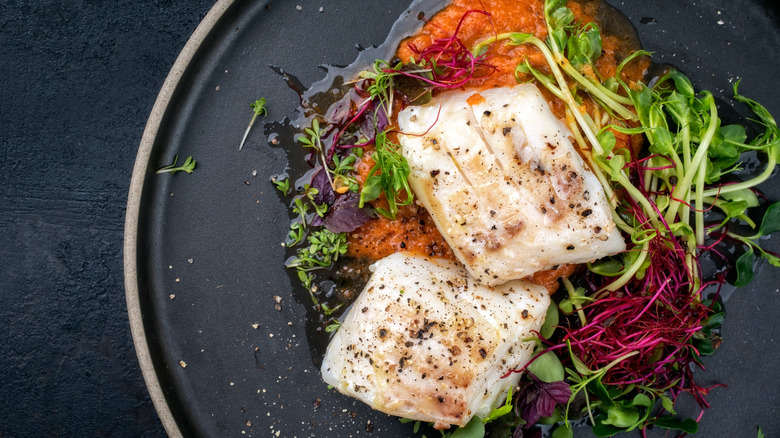Coconut Milk Is The Secret Ingredient You Should Have On Deck For Braising Fish
Coconut milk is useful for more than piña colada recipes. As many chefs and home cooks know, coconut milk can be the secret ingredient to help make your dish creamier and give it a slightly tropical flavor. In Indian cuisine, coconut milk is crucial to creating a creamy curry that pairs well with fish. However, if you find that dish too spicy, you can braise your catch in coconut milk instead.
Braising is the art of slowly cooking meat and vegetables in a small amount of liquid. First, the fish is seared to pack in its flavor. Then, it's slow-cooked in a pan. While you can use water or oil to braise fish, it's better to use a broth because it allows the fish to soak up that extra flavor. That's where coconut milk shines. Coconut milk has a nutty, sweet flavor that combines well with the brininess of fish. Likewise, the creaminess of the milk will make the fish soft and velvety. It's a flavor pairing that will transport you to a beachside bungalow with every bite, assuming that you cook it properly.
Avoid these culinary mistakes
When it comes to selecting your fish, you want to pick a fillet that is easy to braise. For instance, swordfish and tuna might be too hearty for braising, so it may be better to broil or grill those. In particular, salmon, snapper, Murray cod, and monkfish are great candidates for braising. If you're dealing with a delicate piece of fish, consider employing a bed of vegetables to put some space between the fish and the bottom of the pan.
While you can use a variety of wines and broths to braise your fish, coconut milk also helps make it tender, acting as a tenderizer as it infuses the meat. For that reason, you may want to let your fish sit in the coconut milk as a marinade for a bit before braising to soak up extra flavor.
When braising in coconut milk, you have to be careful to avoid letting the milk curdle. This can be disastrous for the dish. Coconut milk does well in low heat or a simmer, so be careful not to bring it up to a rolling boil. Although this process requires a slow cooking time, you should frequently stir or ladle the coconut milk over the fish to prevent it from thickening and curdling.

